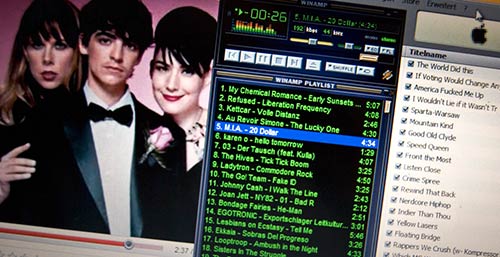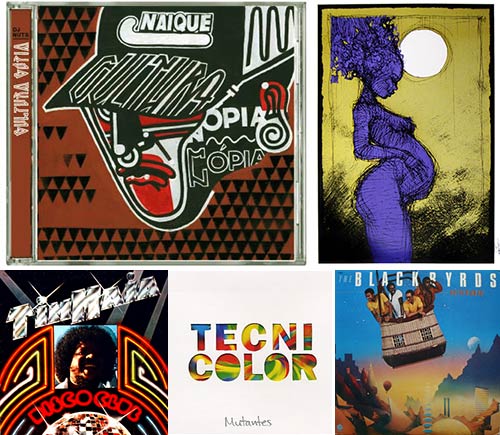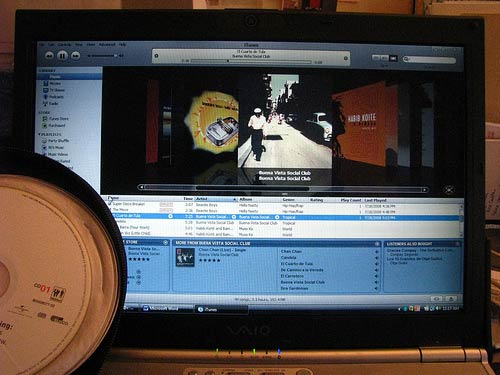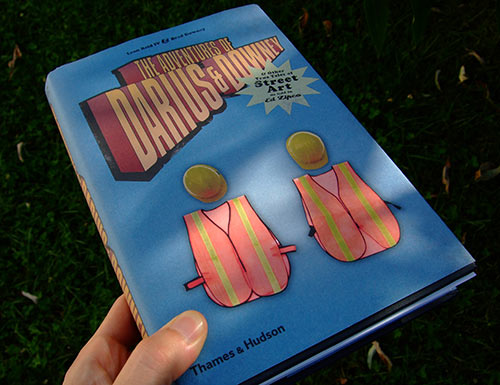
Interview with Brad Downey
“The Adventures of Darius and Downey”
by Thames and Hudson
The adventures of Darius & Downey (& other true tales of Street art) is no ordinary street-art book. It is illustrated with many photos, but it is above all a book to read. A testimony of your street experiences from the early 00’s to nowadays with Darius Jones and a few other friends. Who had the idea to write a book instead of a more classical illustrated monograph?
Darius and I just figured that about half of what makes our work interesting is the adventure and the struggle, as we don’t get paid generally for anything we do outside. So to show just a photo is just showing half of the work. We wanted to try and show the complete lifespan of a piece of work. They have never been just sculptures. They have a life before they are installed during and sometimes they take on a kind of afterlife. The process mimics the style of the installations. The work disguises itself as official street furniture in order to hide in the city hopefully giving it longevity. We also disguised ourselves as official objects in order to hide within the system that would try and stop us.

How did you work with Ed Zipco, who actually wrote the book?
We have known Ed for almost 11 years now. He has been on numerous installs with us and is a really talented writer. For this project Ed, Darius, and I moved to the middle of no-where Pennsylvania for three months, because it was cheaper and less distracting. Each night before sleeping Ed would make questions, in the morning he would interview Darius and I with digital-video, in the afternoon he would write, and after dinner the three of us would sit and discuss what he had written. Sometimes he had to call people and interview them on the phone and record it with the answering machine. But after 3 months he had most of the material in interviews and spent the next few months writing and fine-tuning everything.

I have the feeling that documenting the work is nearly as much important as the piece itself to you? In “The adventures of Darius & Downey” you present us Omar/Swatch, an old school writer who sells street-art pieces stolen in NYC. Whereas Darius is very upset (and we understand him), you seem to be more comprehensive about him and to appreciate that Omar photographs the pieces in context before taking them.
Omar is a really interesting person. I am not sure if he is the only one like this but he is the only one I have met. In the art world you have guys that walk around art shows and exchange money for artwork. The deal is: the buyer doesn’t just exchange money for the work. The buyer is supposed to love the work and care for the work and make sure that this work is recorded throughout history and placed in a cultural timeline. This is what a good collector does, I hope Omar is doing this. On the one hand he is illegally de-installing street art for his own benefit and maybe prophet. On the other hand he was exchanging something more valuable than money to preserve the real work. Maybe it isn’t important for the work to last as an object, and most of it doesn’t. But it’s always great to see some of the real things inside or out. I am sure a historical retrospective is going to look allot more interesting with artifacts. Omar knows the original is culturally worthless without the reference to the original location. To show the artifact which would have been de-installed and thrown away eventually with proper documentation makes sense to me. Of course I hate it when any piece I like disappears, especially if it’s my work or a friend’s work. But, I feel he is an unusual and valid collector and I am happy for him to have some of my work. An illegal collector.

You also made a documentary “Public Discourse” where you filmed Swoon, Shepard Fairey, Darius Jones/Verbs, Nato… Is it where begun your street-collaboration with Darius?
‘When I first moved to New York from Atlanta, Georgia, in like 1998 that was what opened my eyes to graffiti. In Atlanta you have a lot of good graffiti (like Sever, Revok, Hense) but for me it was all so eye-candy, mostly legal walls. When I moved to New York it was thrown in my face, as New York graffiti has a really particular kinda flavour: the work layers up and has so much energy, in a way that I had never seen in any other kind of art form. You can go outside and get immediately punched in the face with this fast energy. That really caught my eye and drew me in immediately. So I decided that since I was in film school that I’d try to make a film about some of this stuff, maybe just to try and meet some of these people and to get my head around it some more. That’s how the Public Discourse thing came about. Verbs was one of the artist I chose to film but we immediately clicked and started talking and coming up with concepts. Between the years of 1999 and 2004 we were pretty much inseparable, similar to a married couple (without sex). We ate, slept, and shit, each other. Best friends and working partners. We stuck together most of the time for practical reasons, while working together we always had an extra perspective on the work and an extra pair of hands.

Do you think you will eventually make a new film about your street experiments?
Most of the new work I have been doing is videotaped. But I try to make each piece stand alone, as its own film. I don’t have any ambitions to make another street art documentary and I don’t think it would be honest to ever make a larger film about my own work. I tried my best to keep myself out of the first film. But, when I exhibit inside the work usually ends up as a video or photograph.
When did creating art become something important in your life?
It was always been there.
Street-artists usually chose an “alias” for their work. You have always used your real name…
I always had an issue with the “name” stuff. I could never get comfortable with the idea of hiding behind an alias. At first it was hard… no one understood or liked dealing with a “street artist” who was using his real name. They always want cool names. Using a real name was kind of like turning your back on the movement. But I still feel its one of the best decisions I ever made. I see many of my friends having identity crisis now that they are older.

After NYC & London, you are now based in Berlin. What makes Berlin so much attractive?
It’s my favorite city in the world right now. The city is so alive and full of possibilities. Berlin is constantly under construction (socially and physically), and nothing feels permanent. This impermanence is a big inspiration for my work. Berlin seems to be a place I can change and alter to suit my needs.
Do you have connections with the local scene?
and what do you think you share with other artists from Berlin?
I am really close to many of the people currently active in Berlin. I share a studio with Akim and “The Wa.” Both of which are making nice projects on the street. Akim knows everybody (not just street and graffiti artists) through him I have met almost everyone here. I think Berlin is a place that you can still explore and do stuff. Since all is under construction you can still do weird things without anyone noticing or caring. Its going to get cleaned up anyways. I enjoy the “fuck it” attitude of the street art style here. I really love guys like Mr Ix, Zast, Sex6.de, hesht and spair. And guys like Kripo Adams and Akim are starting to take there work in really unusual directions.
There’s that scene in the book where Darius’s art teacher says to him, he is loosing his time and money at school by writing “Verbs” again and again. The teacher told him he must experiment new things. It sounds like a turning point to him. Can you tell us what is the most important thing you learnt at art school ?
When I was getting my masters at the Slade in London I remember the tutors not really knowing how to give me criticism or advice for that matter. I think they really didn’t feel they had any classical reference points for what I was doing (because most of what tutors do in art school is say “have you heard of, such and such artist, you should check them out”). Actually I remember one conversation with Kate Bright a tutor of mine, and an amazing painter. I said to her “Hey Kate you haven’t spoken to me all year, I have seen you speak to everyone at least once.” Kate looked at me and said “Brad think about it, do you really think there is anything I can say to you about what you are doing.” Art school is mostly about the students. They are the ones that teach you the most. The Majority of the tutors seemed to be walking around looking for ideas to steal.
What’s your street-piece/action you are the most proud of?
It’s hard to say. But I am quite fond of taking CCTV cameras down. I have a nice little collection of these objects. It is something I have been doing since 2005, I think this work is important. I do not know if its art but I am proud of it.
How do you pick your spots? What draws you to say that’s the right place for my piece?
Going around and just searching for something that grabs my interest. Then I make something that I think is missing or could add to that or emphasize a particular existing narrative, moment, or neighborhood. Sometimes history brings the inspiration, sometimes an architectural or urban planning mistake, sometimes a nice color, or a construction worksite, different every time.

How do you feel about galleries?
I guess exhibitions and books present a kind of guide to seeing the outside. It is impossible for the average viewer to be so observant in the urban space; the stuff around the art can sometimes camouflage or hide it. They also give the viewer an opportunity to see work from artists from all over the world. When walking around a big city there is a moment when the brain can only see so much so its nice to see some of these things with white stuff around them and kill all the urban visual noise.
But, No matter how hard you try to force it inside you will never completely capture the heart of it. Street art inside is still tricky. I feel it has to be dealt with carefully. This context shift is important because museums and collectors keep and important record for history and posterity. But, I also feel that my work cannot completely fit in a museum, this isn’t because I don’t want to work there but because the work has a more natural setting outside. It is like putting a cage around a lion, the lion is still interesting to look at but its much more of an experience to see it running in the desert in Africa. I think with “street art” sensibilities you walk a fine line.
On the other hand I think this also applies to work outside. Some people especially street artists think that a piece of work is more interesting just because it is placed outside. I feel that many so-called “street artists” are not making work that necessarily needs to be outside. An arbitrary image placed outside is not more interesting even if it does give credibility and recognition to the artist. It simply widens the audience.
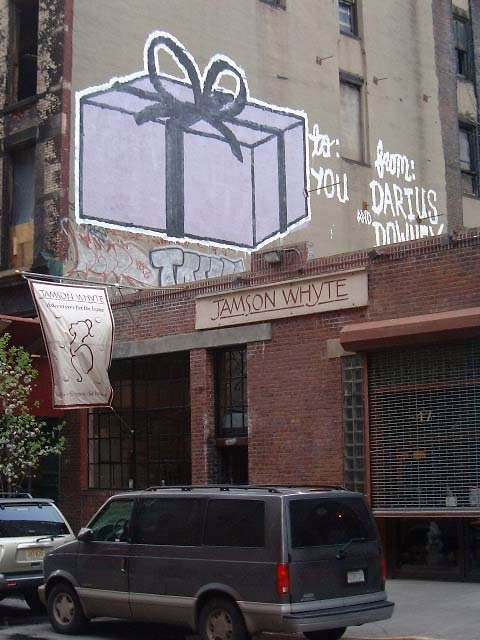
In your Wikipedia page it is said you were awarded the title Kentucky Colonel. What is this ?
I was born in Kentucky. It is a really beautiful place. I want to try and keep a connection to my roots.
I also like the idea of having a military rank. I grew up in Military family. Most of my early years were spent on military bases. I always knew that I did not want to be a soldier. In fact I dislike nationalism and consider myself an ex-patriot. But, I have allot of respect for the lifestyle. My father was one of ten children. The Marines gave him an opportunity to get away from the poor lower class neighborhood he grew up in. He was the only one of his brothers and sisters to get a college education, thanks to the military.
What are your plans now ?
Keep working in Europe. I will be in Prague for the month of August.
“The Adventures of Darius and Downey” & “Public Discourse” can be ordered on Brad Downey website.
ekosystem july 2008



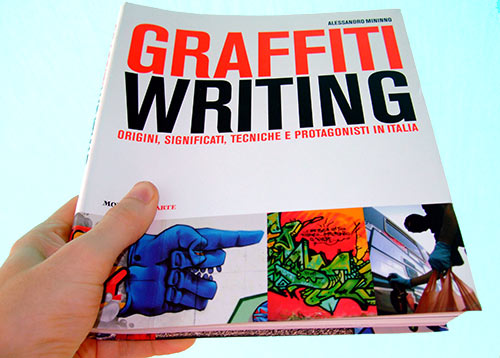

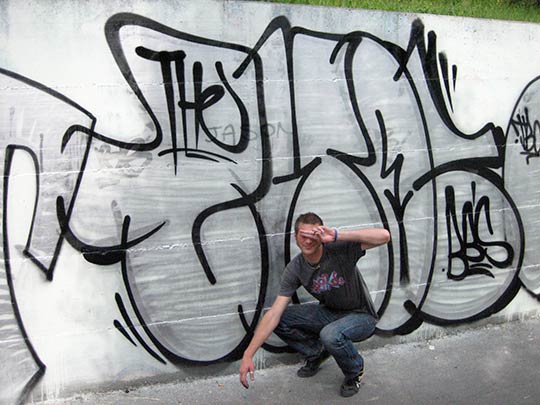
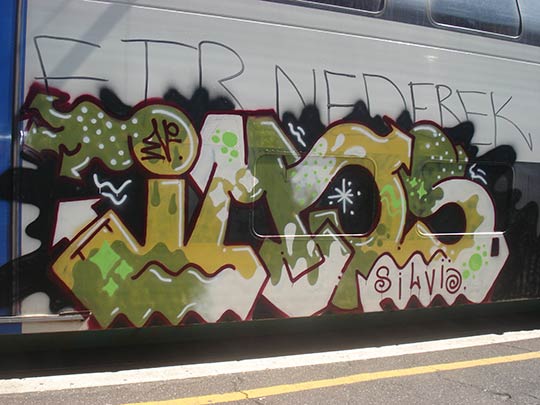
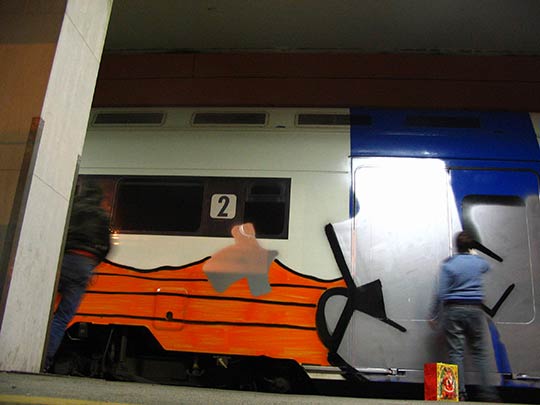


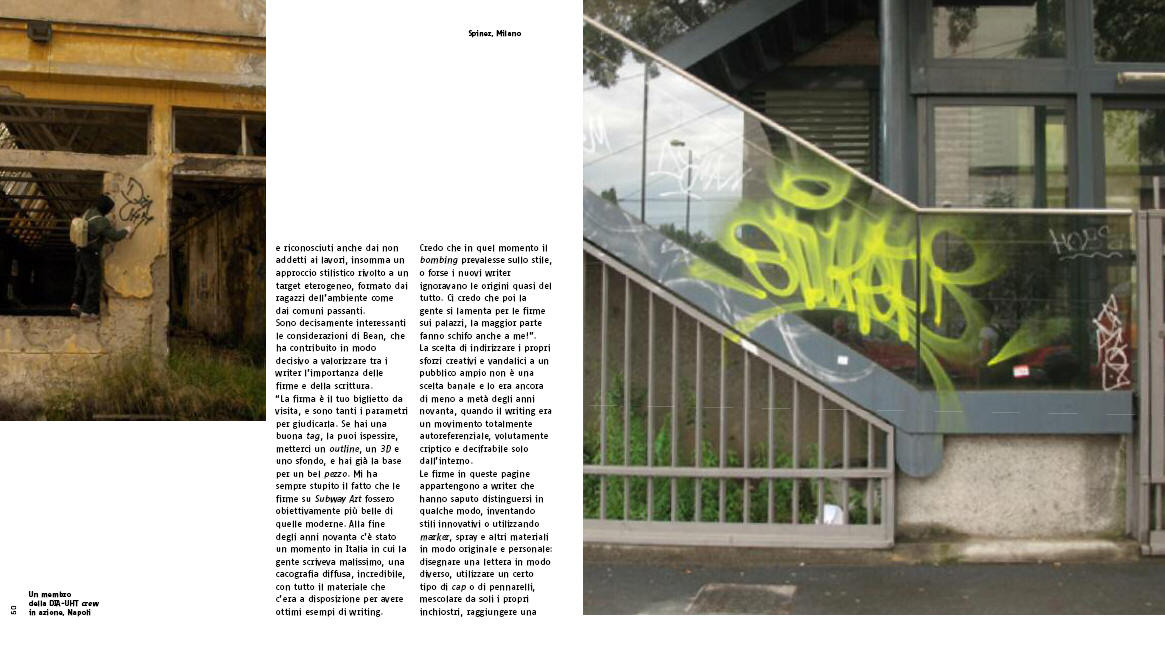
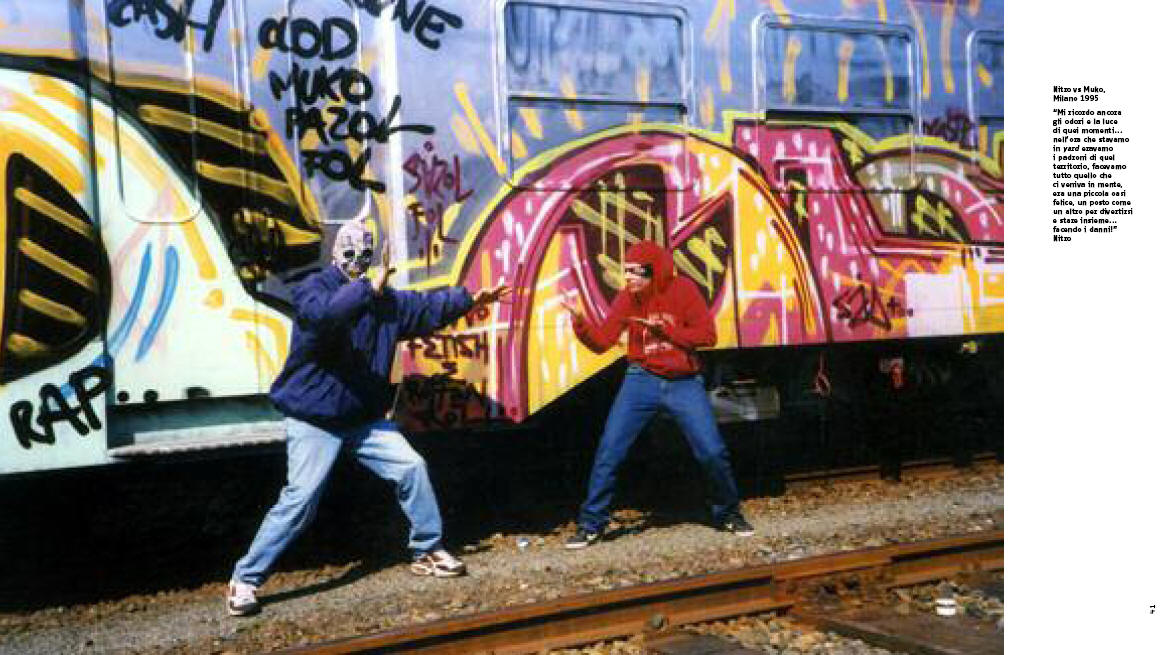

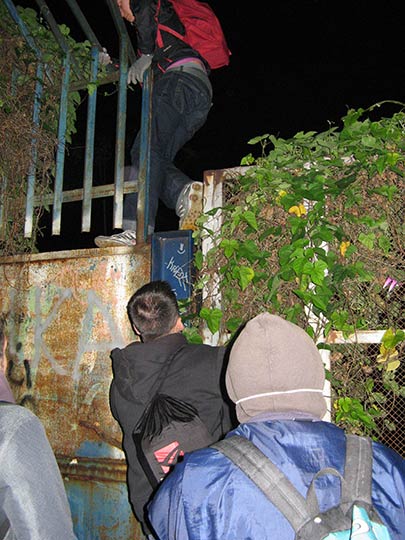
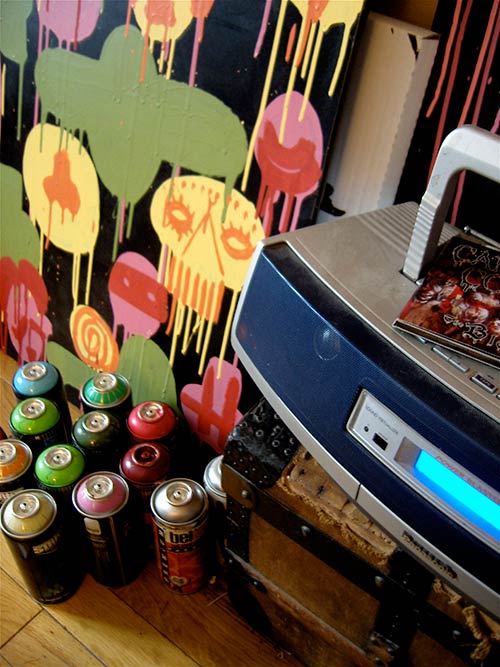
 ** La Muerte – Jeanspezial **
** La Muerte – Jeanspezial **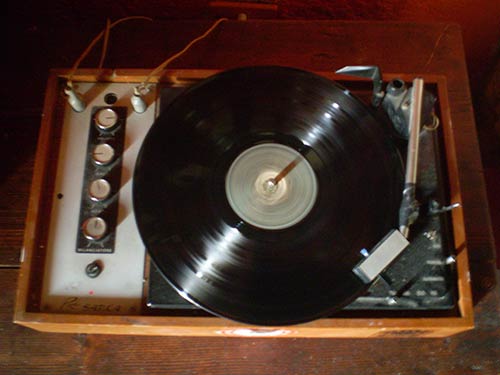
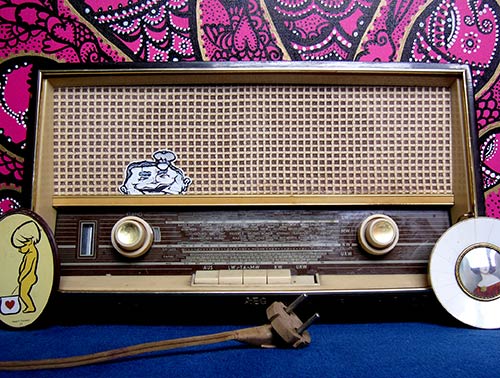 ** ZonenKinder **
** ZonenKinder **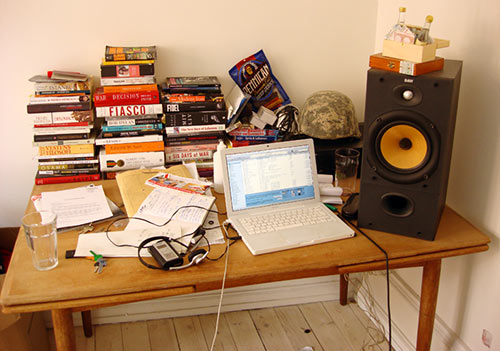 ** Silencio **
** Silencio **